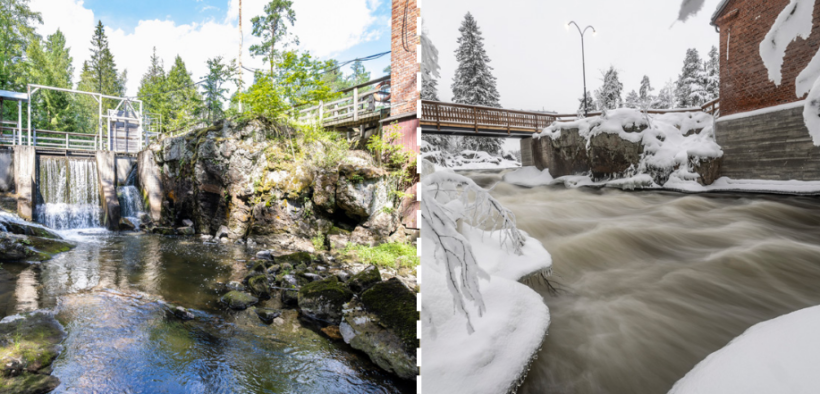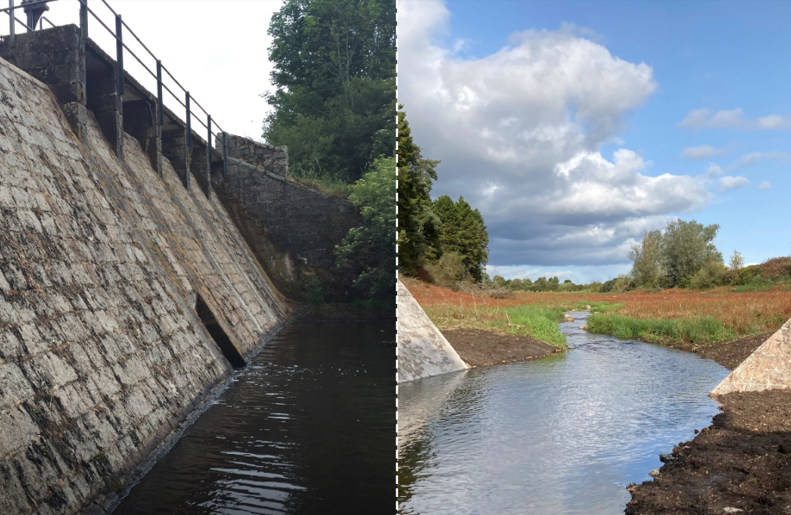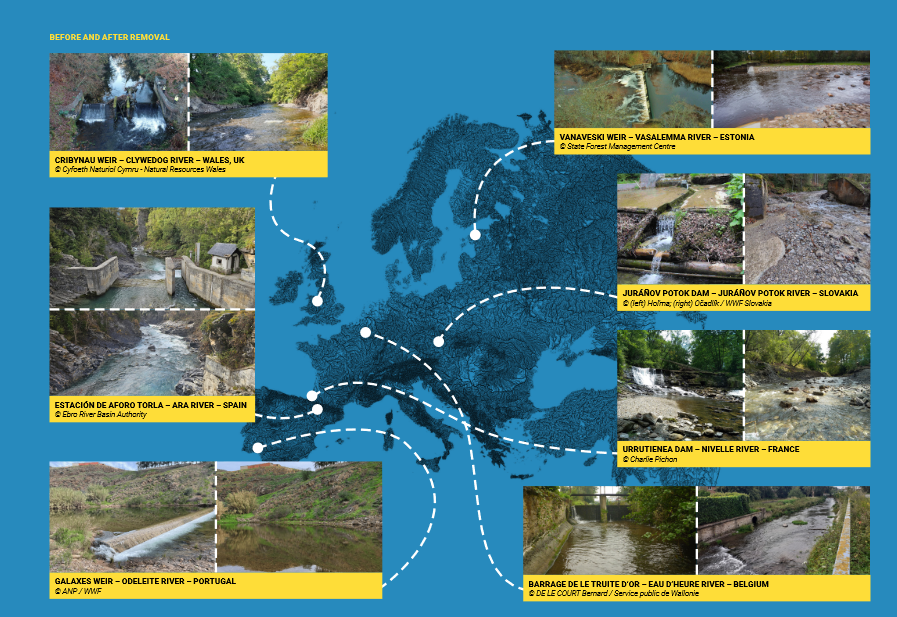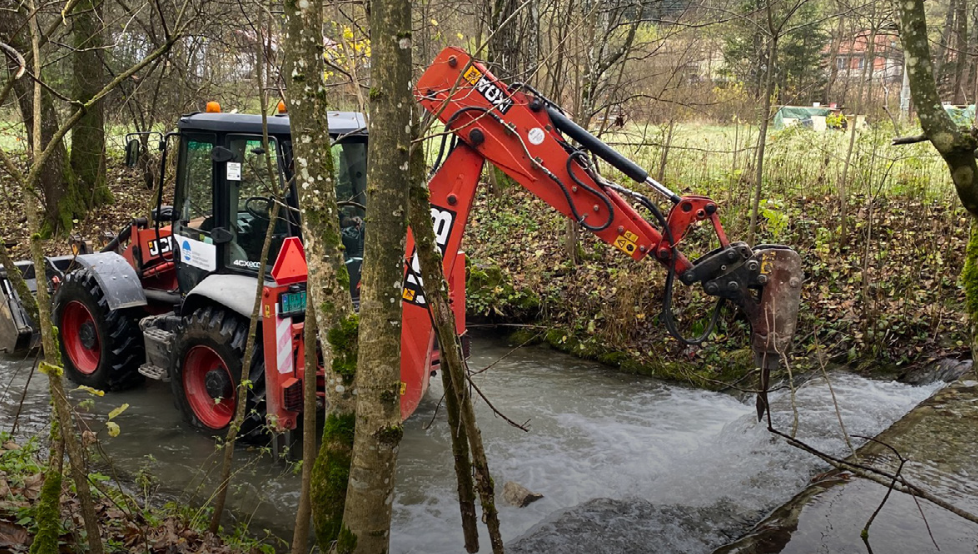Momentum builds to rid Europe of controversial dams and barriers
Share

Nearly 500 dams and other barriers across Europe were removed from the region’s rivers in 2023 – a near 50% increase on the previous year.
Figures released by Dam Removal Europe (DRE) reveals that France led the way in helping rivers recover and opening up opportunities for fish to migrate upstream to spawn with 156 structures destroyed, followed by Spain (95), Sweden (81), Denmark (72) and the UK (36).
Dams were removed in 15 European countries and led to the reconnection of over 4,300 kilometres of rivers, boosting biodiversity, restoring ecosystems and enhancing climate resilience which is critical for communities, economies and nature, says the report from DRE.

The European Fishing Tackle Trade Association (EFTTA) – the body that represents the tackle trade in the region – welcomed the figures but cautioned that it is very important more are removed and more well-functioning fish passages are put in their place.
Jan Kappel, EFTTA Public Affairs Officer, told Angling International: “Dams which only serve the purpose of supporting a so-called ‘small’ hydropower station, which blocks fish migration or chops them up in the turbines, should be removed as soon as possible.
“European rivers are fragmented by more than 1.2 million barriers – including over 150,000 obsolete structures – many of which pose significant hazards to people and wildlife.
“Some dams are necessary, but a lot are not. All fish need moving space to finalise their lifecycle. This is most obvious for species that move between sea and freshwater like salmon, trout eels and more.
“Fish ladders and passages have been put in place, but many are not suitable for some species or not workable at all due to poor maintenance.”

In its lobby leaflet for 2024 EFTTA has called for an end to subsidies for small hydroelectric power stations, the lessening of negative effects from already existing power stations and the implementation of safeguards for waters and biodiversity from further hydropower expansion.
It will continue to promote its hydropower campaign film which has already been viewed by 50,000 on YouTube and other video channels.
Kappel added that the EU Biodiversity Strategy 2030 has an objective to free 25,000 kilometres of rivers. He said: “This should be easily attainable as funding is available to remove many dams.”
DRE said that dam removals has gone from strength to strength since 2015. “We want to continue this trajectory so that dam removal becomes business as usual in all European countries.

“DRE will continue to support this process to mainstream and scale up barrier removal in Europe by enabling knowledge exchange, connecting practitioners and celebrating successful projects.”
It added that it will continue to support countries and regions to initiate the implementation of dam removal projects where removal is not yet seen as a tool for river restoration in regions like the Balkans.
“In addition, following outcomes of the long negotiation process to prepare and approve the Nature Restoration Law, DRE will use the momentum to work side-by-side with partners to provide continued support to EU countries that are still in the initial phase of this process and influence neighbouring countries.
“DRE has the most accurate – and constantly updated – database of removed barriers in Europe to evaluate the advancement in the implementation of European policies and to analyse the progress of this river restoration measure in each country.

“The organisation will continue monitoring and reporting the trends in barrier removal and will provide guidance, assistance and the necessary tools to river restoration practitioners.”
DRE has launched a new toolbox and put into place a freely accessible online helpdesk. Additional information on these new services can be found on the DRE website at https://removal.eu
Main picture: The removal site at Hiitolanjoki River, Finland: (left) before and (right) after the removal operations of the Ritakoski Dam © Mikko Nikkinen / Storymakers
DAM REMOVAL EUROPE
Dam Removal Europe (DRE) is a coalition of seven organisations: the World Wildlife Fund, The Rivers Trust, The Nature Conservancy, the European Rivers Network, Rewilding Europe, Wetlands International Europe and the World Fish Migration Foundation.

The overall ambition of DRE is to restore the free-flowing state of rivers and streams in Europe. In that respect, DRE aims to establish barrier removal as a restoration tool and to mainstream this practice. Through a bottom-up process, DRE has created a continuously growing European network and it is working towards a holistic approach to remove barriers.





